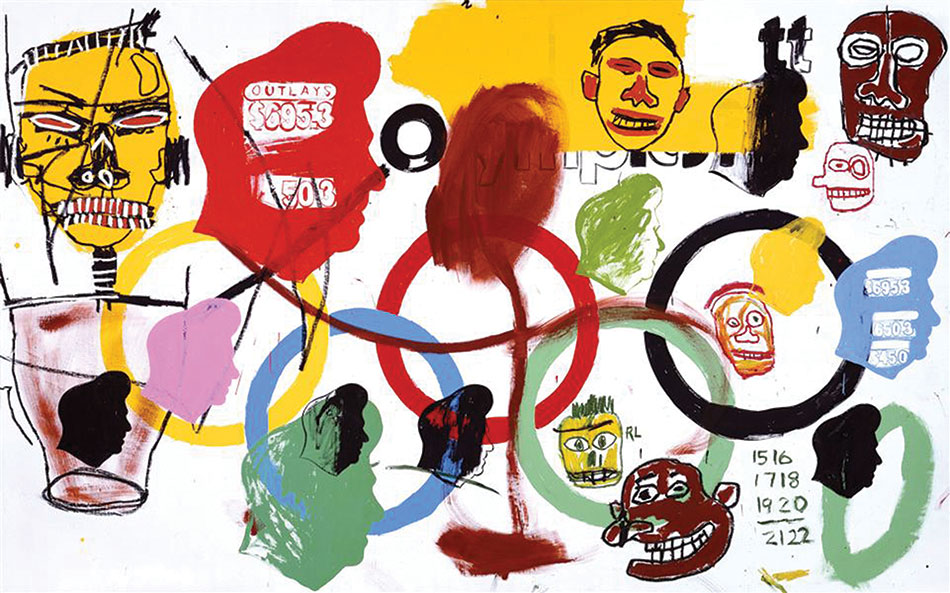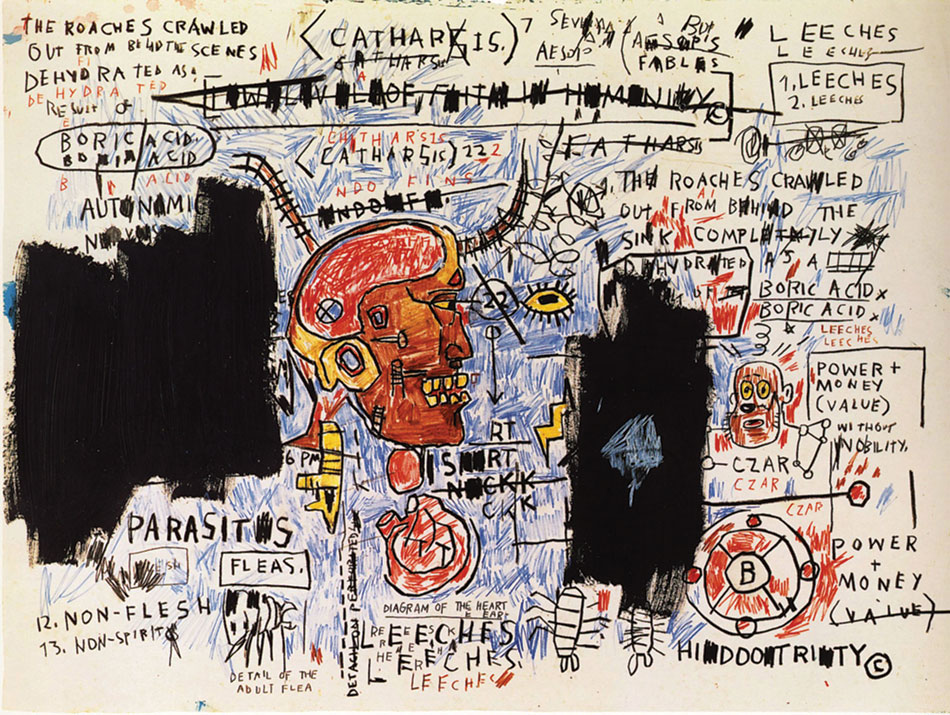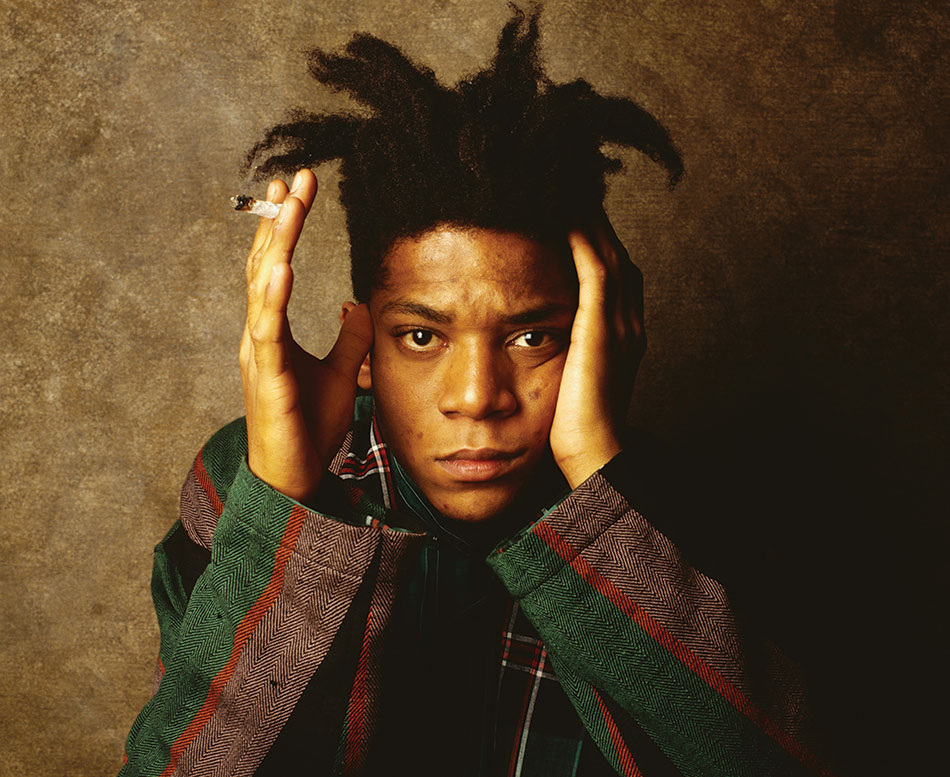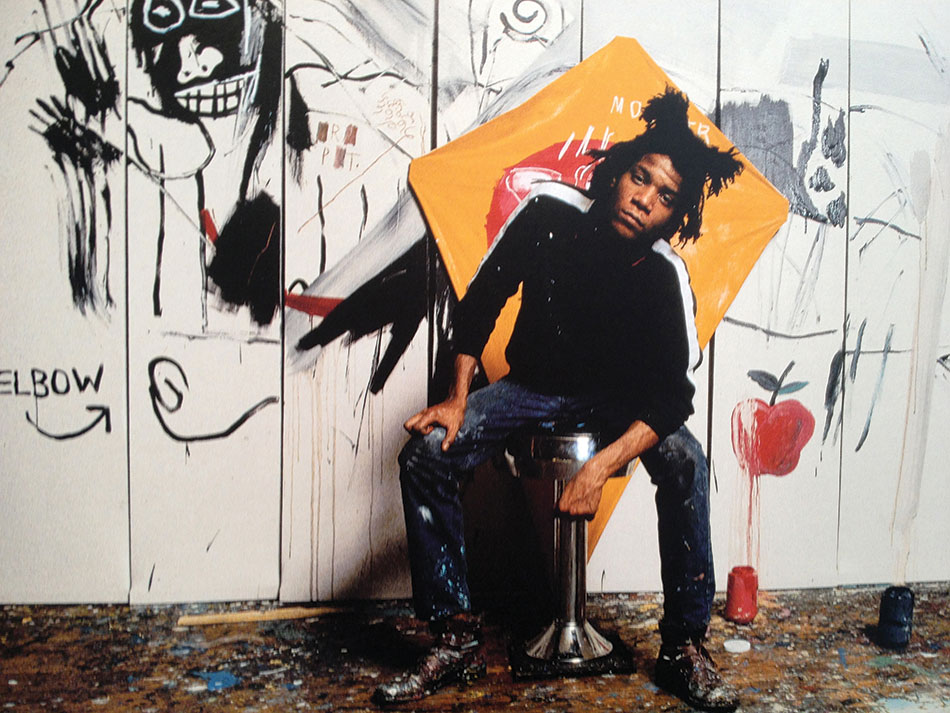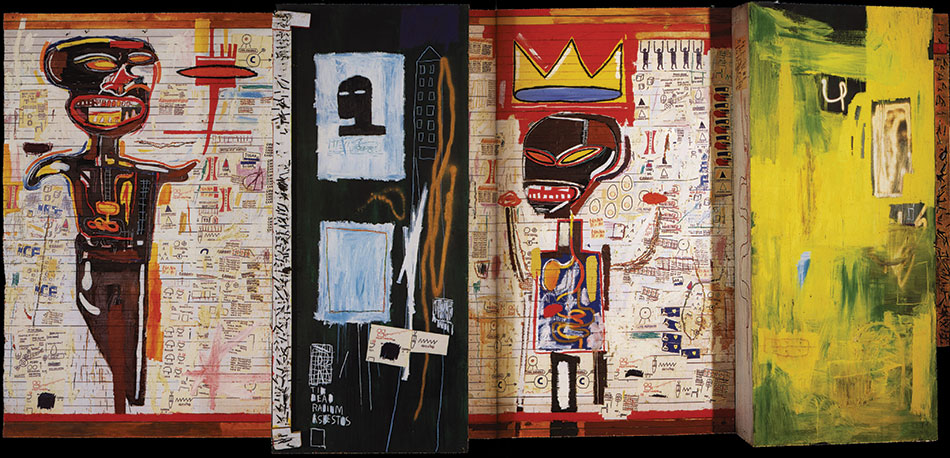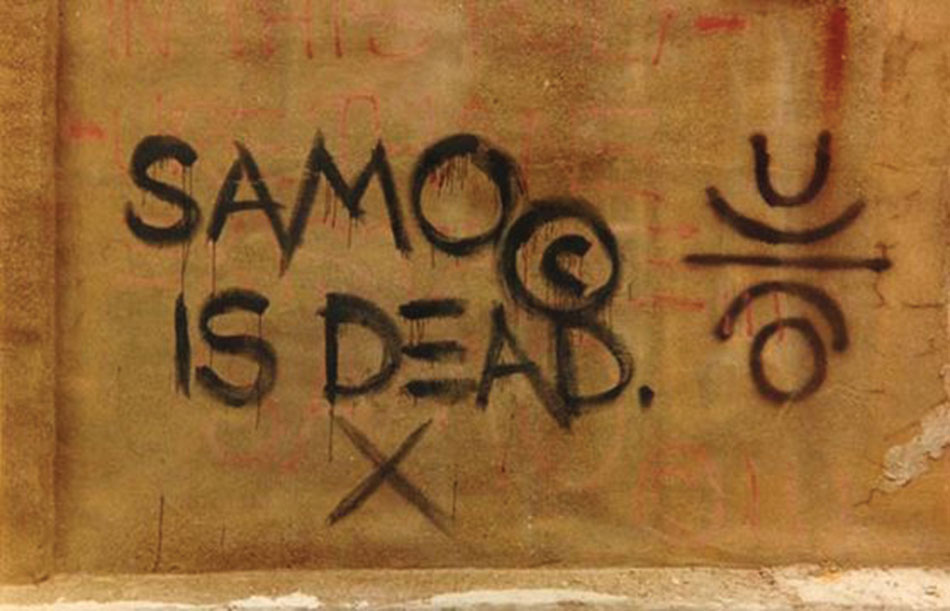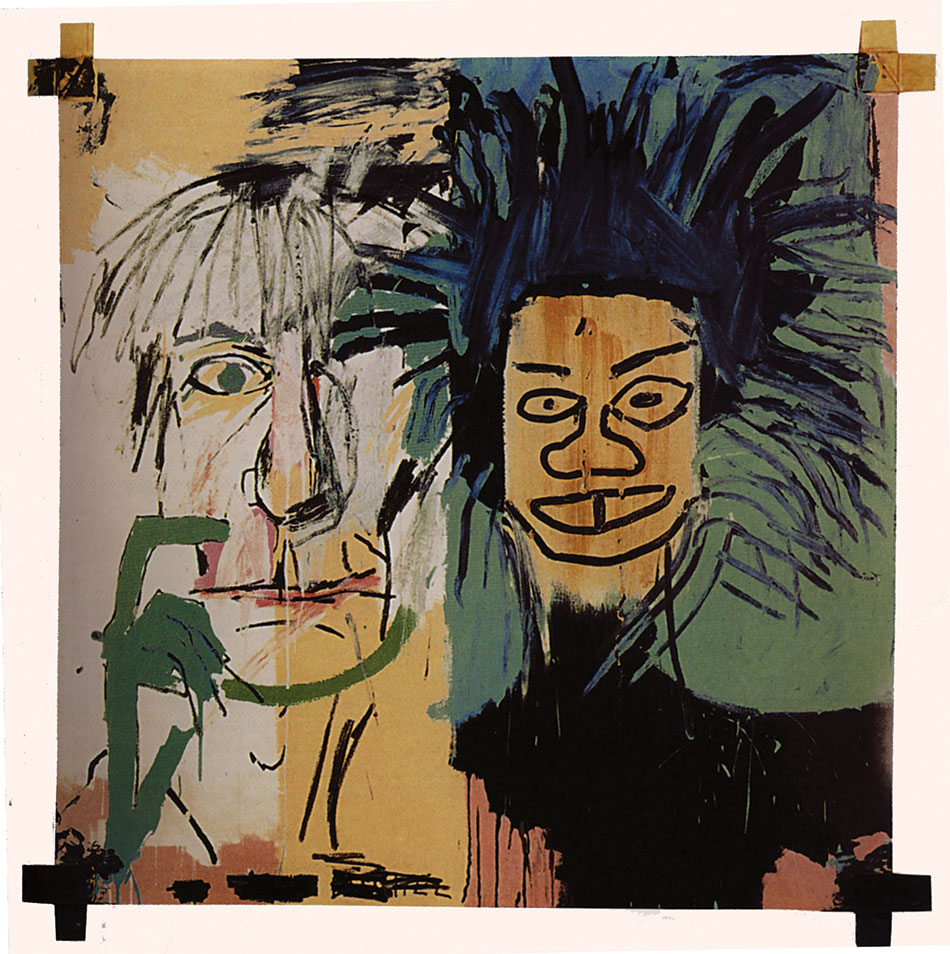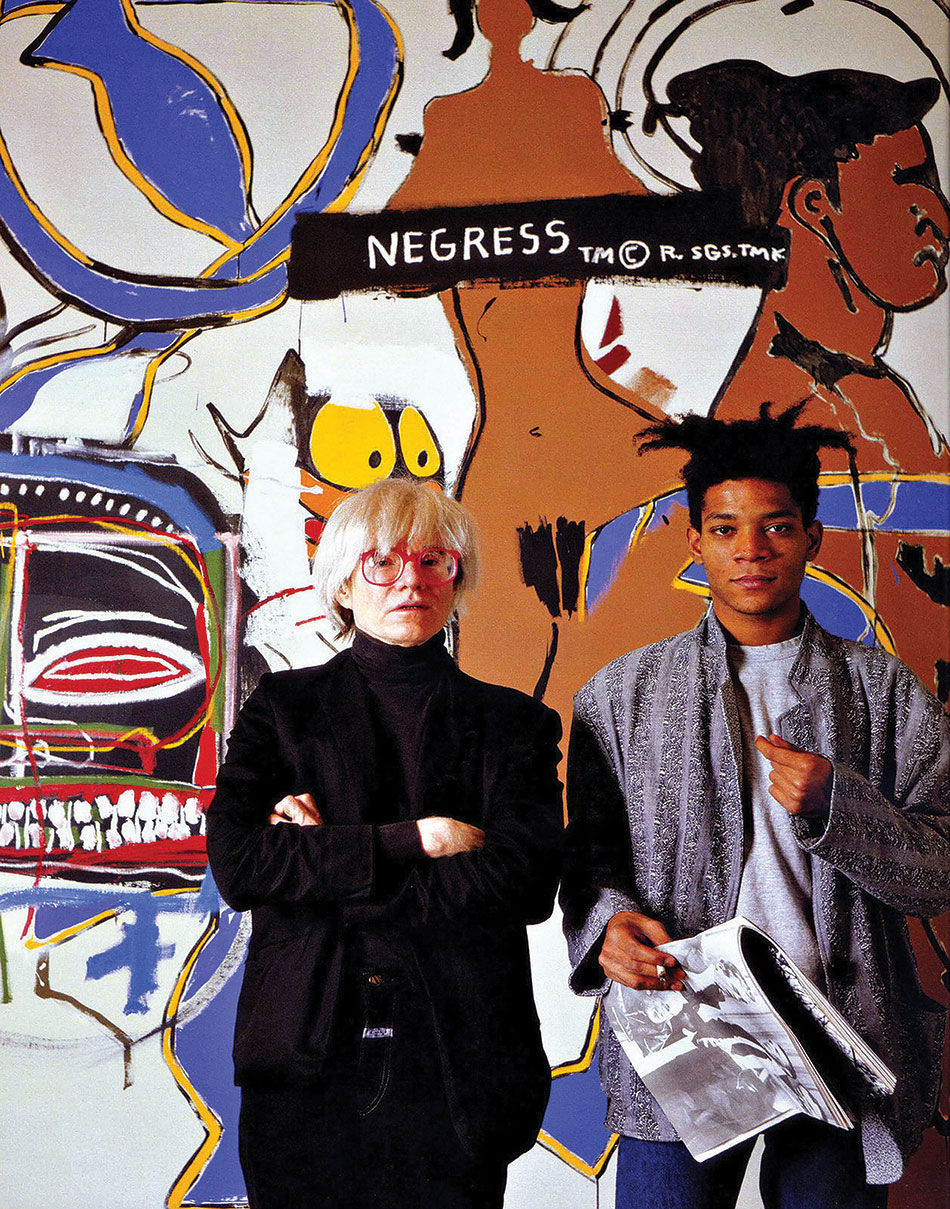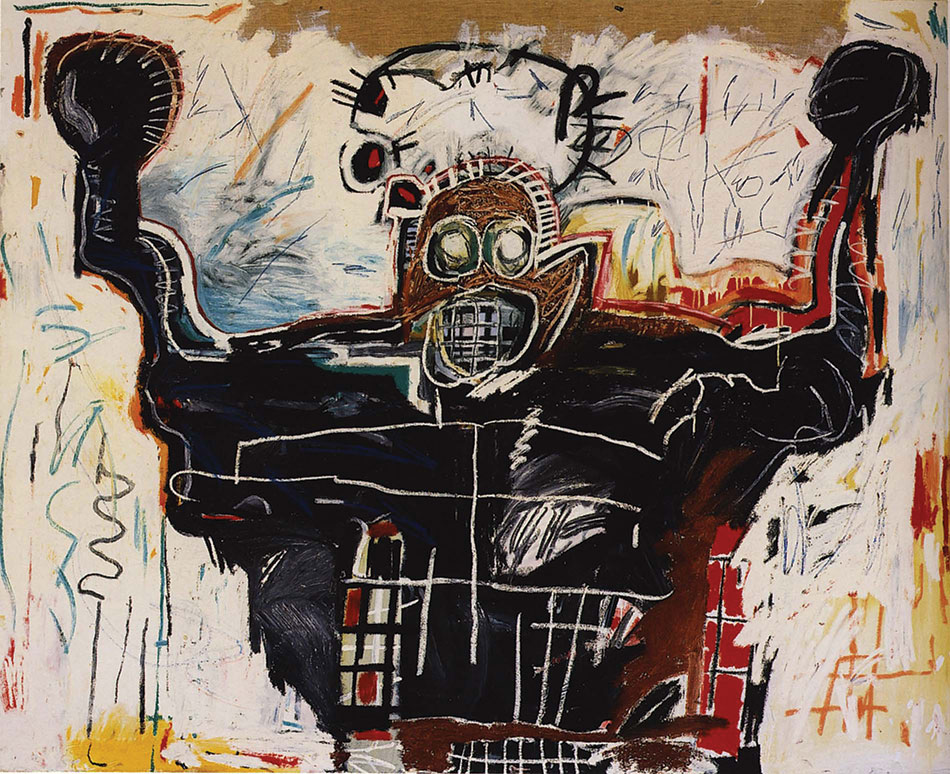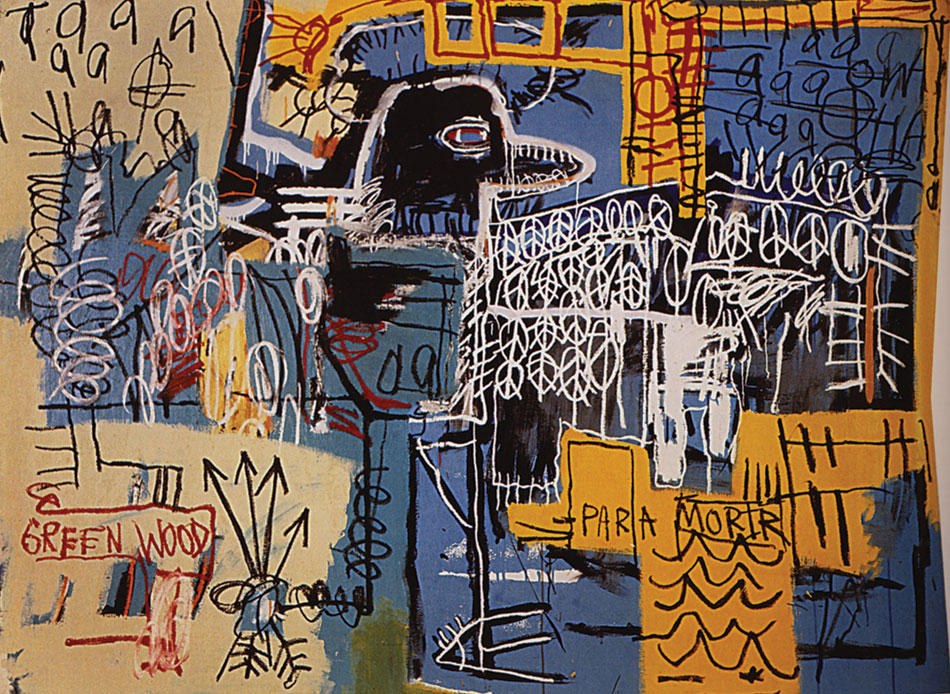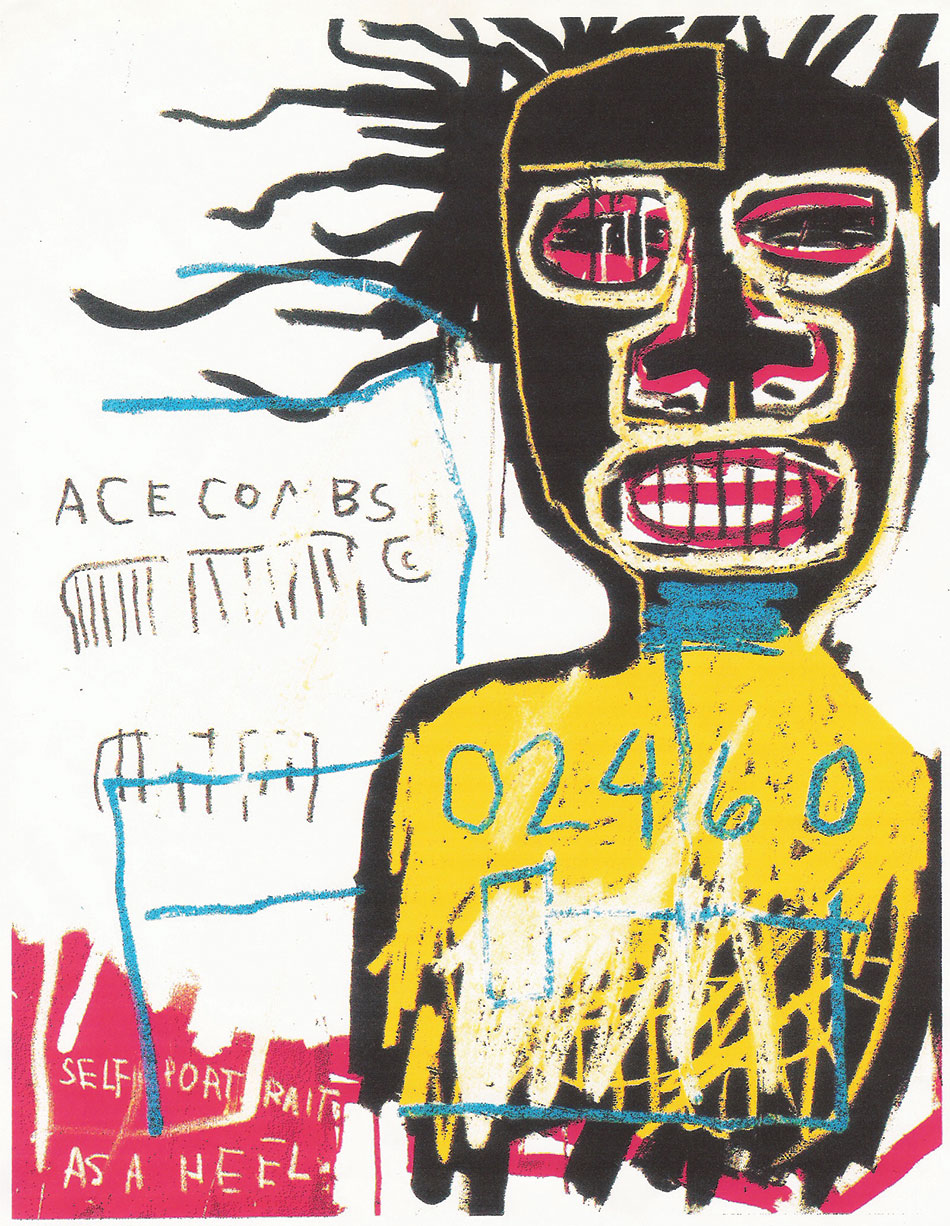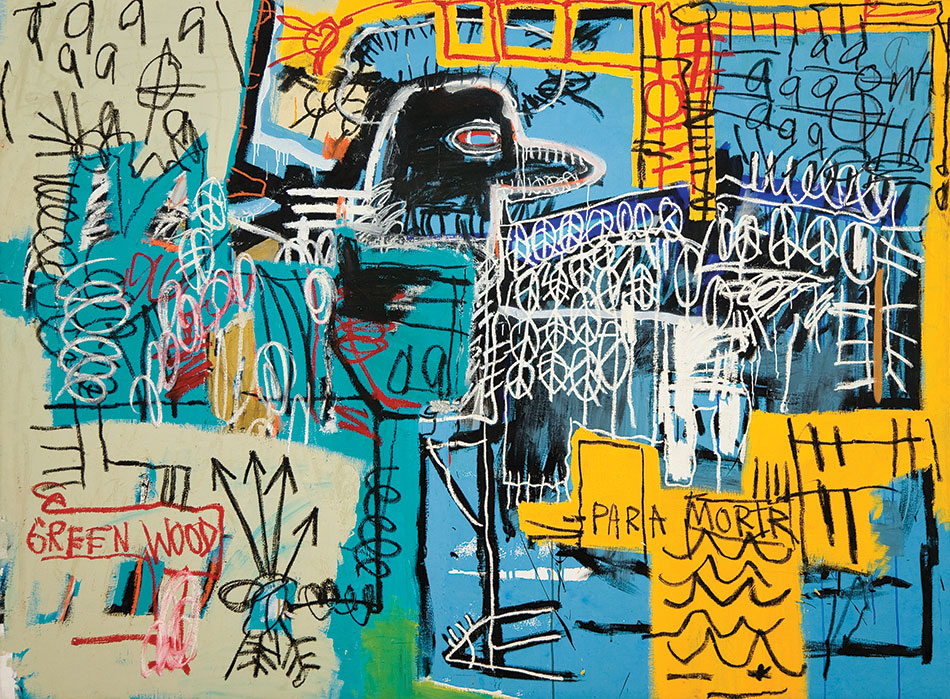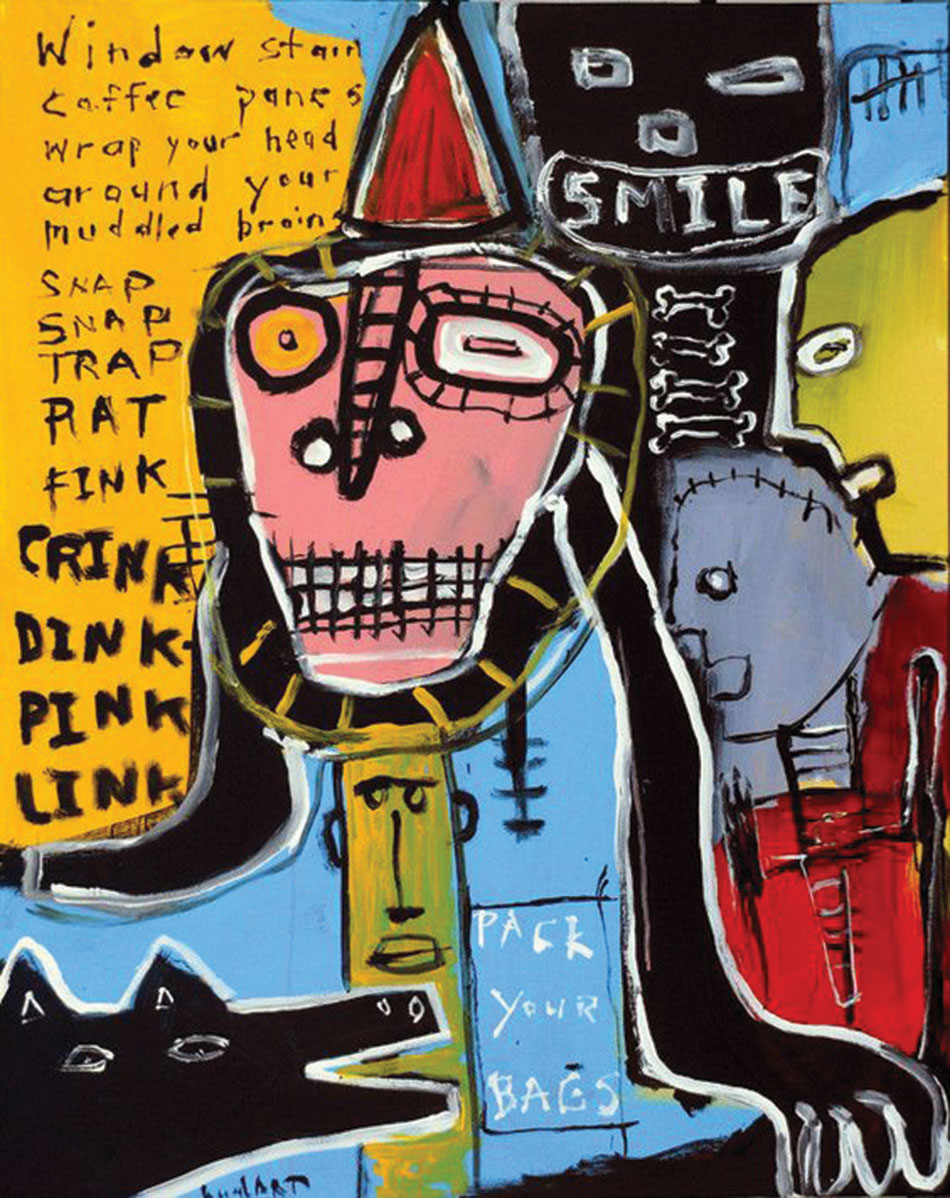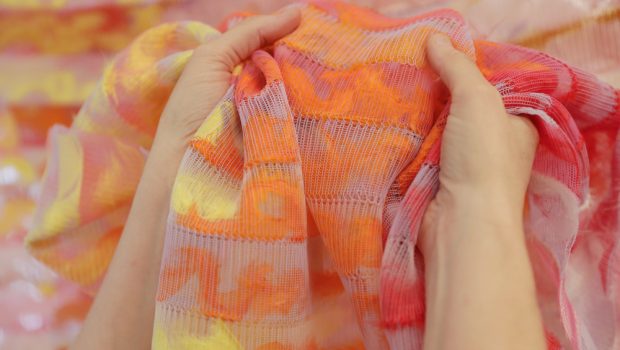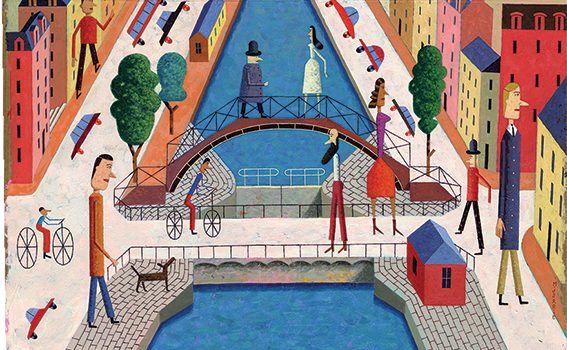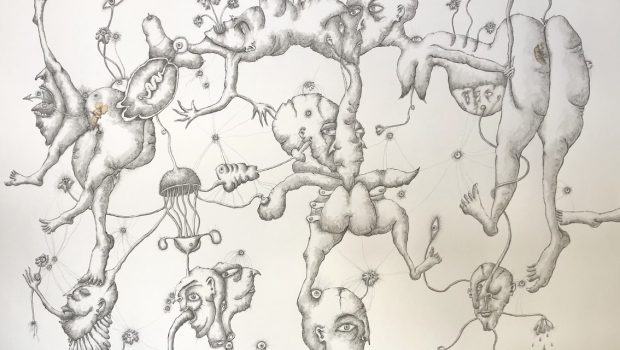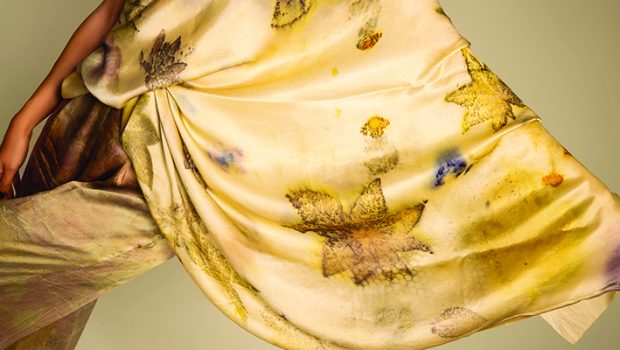Now is the time
An insight into late Neo-Expressionist artist Jean-Michel Basquiat’s life and coveted work
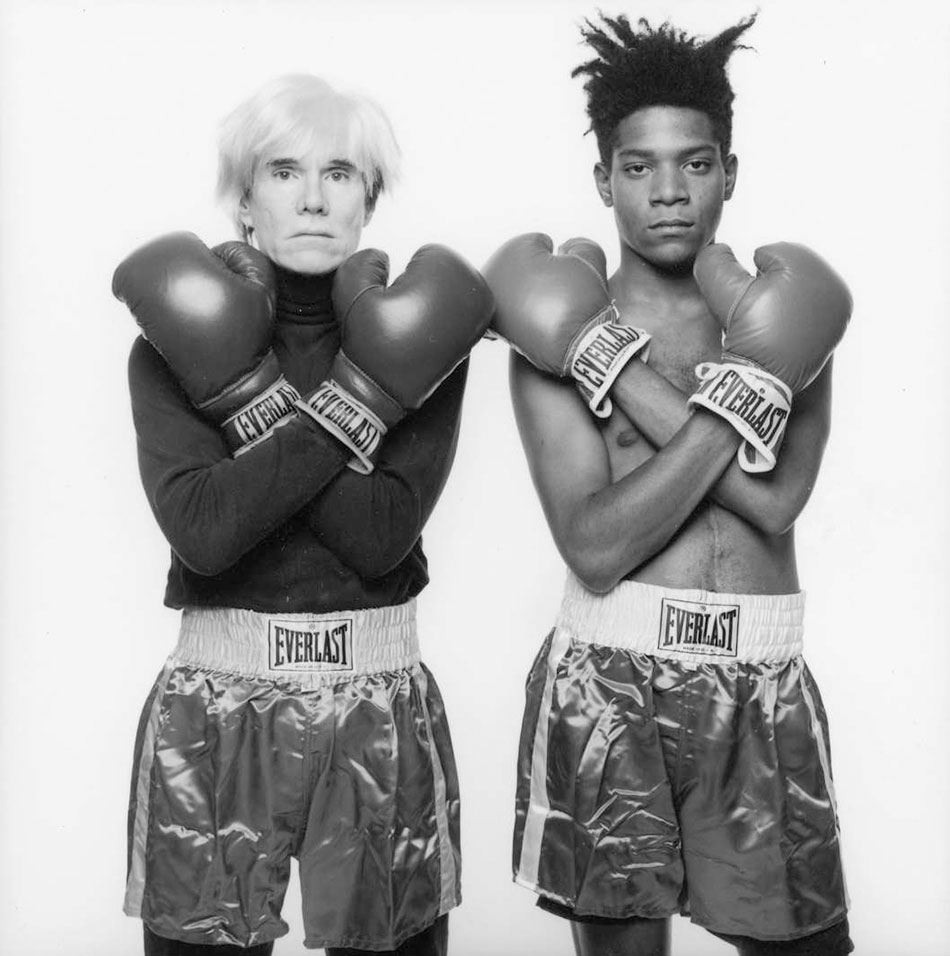
In the late 70s, Jean-Michel Basquiat began working in the art department of the Unique Clothing Warehouse by day, but by night he became SAMO with friend Al Diaz. They began spray painting graffiti on buildings in the Lower East Side of Manhattan, working under the pseudonym. The designs featured cryptic epigrams such as “Plush safe he think… SAMO” and “SAMO as an escape clause”. The Village Voice published an article about the graffiti, generating publicity for the artists. When Basquiat and Diaz ended their friendship, the SAMO project ended with the epitaph “SAMO IS DEAD,” inscribed on the walls of SoHo buildings.
Around the same time, Basquiat formed the noise rock band Test Pattern, later renamed Gray, which performed at nightclubs. A year later Basquiat met Andy Warhol at a restaurant and presented to Warhol samples of his work. Warhol was impressed by Basquiat’s work and persona, which led to a later collaboration on a series of paintings between 1983 and 1985. In the case of Olympic Rings (1985), Warhol made several variations of the Olympic five-ring symbol, rendered in the original primary colours. Basquiat responded to the abstract logos with his oppositional graffiti style.
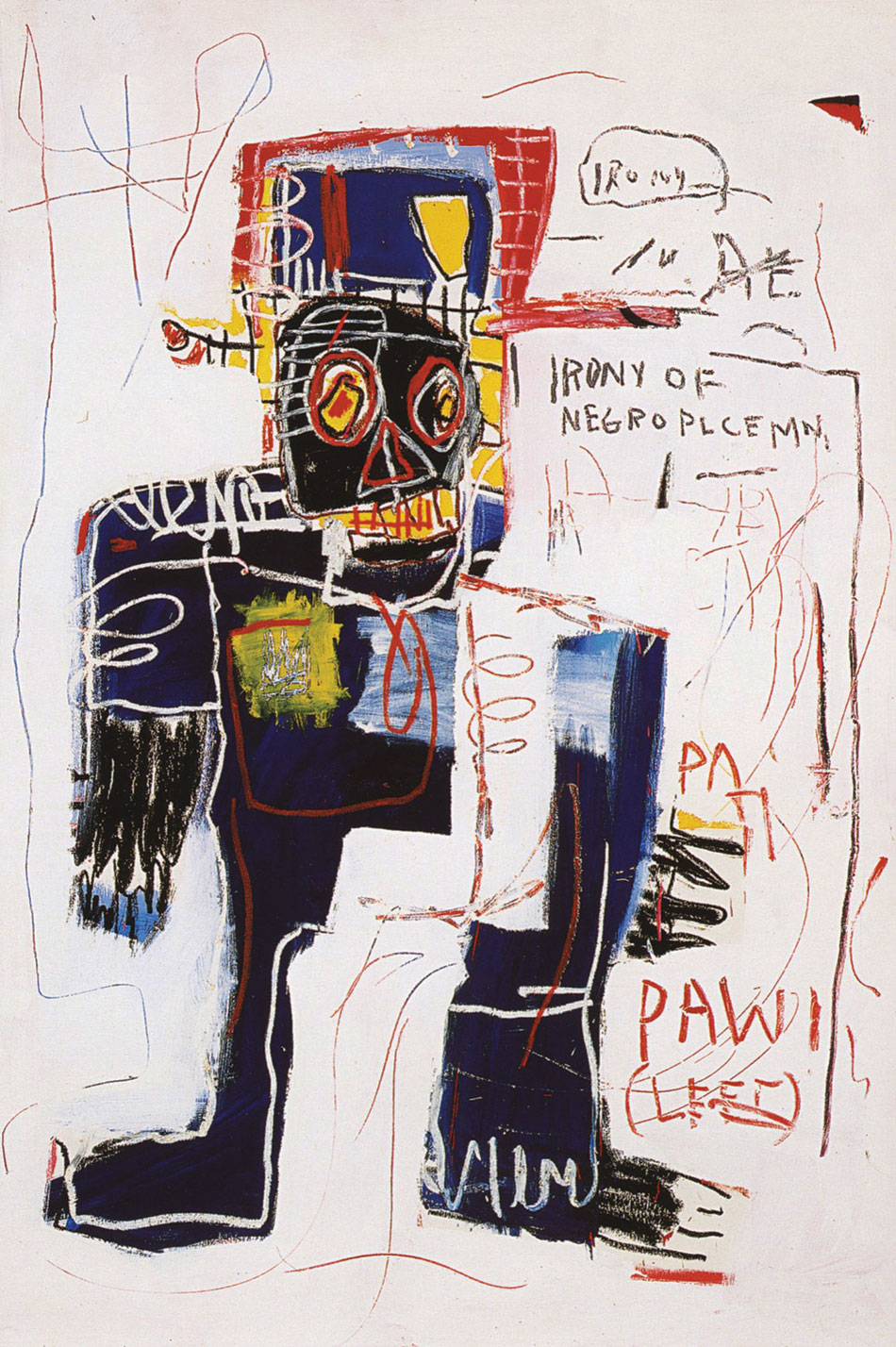
In 1980, Basquiat participated in The Times Square Show, a multi-artist exhibition sponsored by Collaborative Projects Incorporated (Colab) and Fashion Moda. In the same year, he joined the Annina Nosei gallery and worked in a basement below the gallery toward his first one-man show, which took place a year later with great success. An article about the artist featured in Artforum magazine, which brought Basquiat to the attention of the art world.
Kellie Jones wrote of Basquiat’s emerging style in Lost in Translation – Jean-Michel in the (Re)Mix: “Basquiat’s canon revolves around single heroic figures: athletes, prophets, warriors, cops, musicians, kings and the artist himself. In these images the head is often a central focus, topped by crowns, hats, and halos. In this way the intellect is emphasised, lifted up to notice, privileged over the body and the physicality of these figures (i.e. black men) commonly represent in the world.”
“Underlying Basquiat’s sense of himself as an artist was his “innate capacity to function as something like an oracle, distilling his perceptions of the outside world down to their essence and, in turn, projecting them outward through his creative acts”.
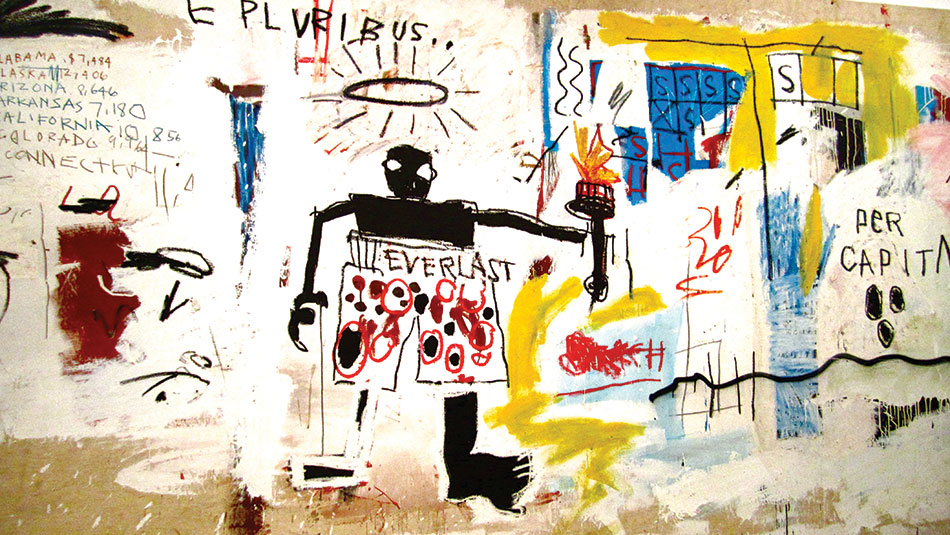
It has been said that underlying Basquiat’s sense of himself as an artist was his “innate capacity to function as something like an oracle, distilling his perceptions of the outside world down to their essence and, in turn, projecting them outward through his creative acts”. Further, continuing his activities as a graffiti artist, Basquiat often incorporated words into his paintings.
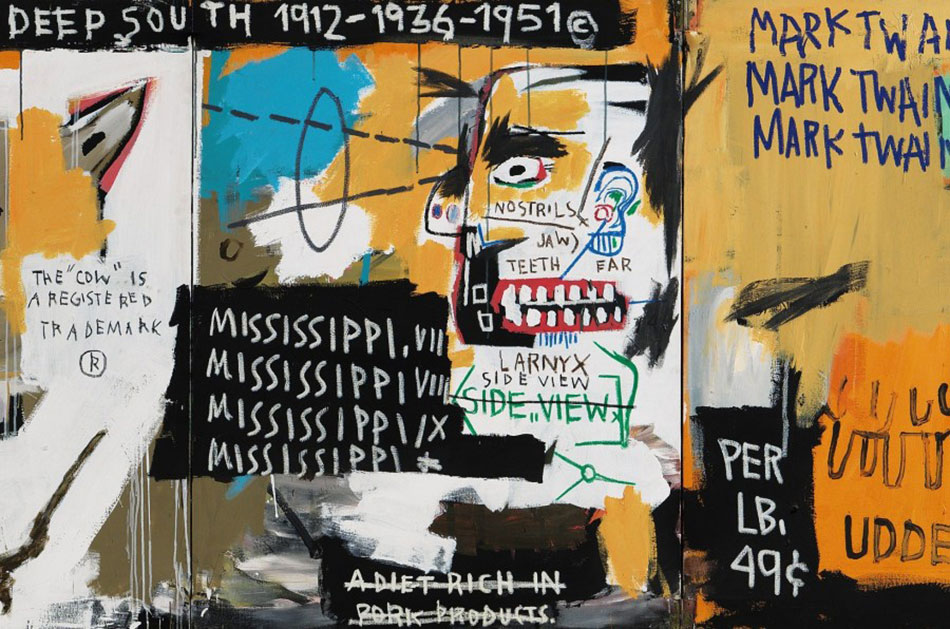
From 1982 to 1985 the artist’s work featured multi-panel paintings and individual canvases with exposed stretcher bars, the surface full of writing, collages and imagery.
A prime reference source used by Basquiat throughout his career was the book Gray’s Anatomy, which his mother had given him while he was in the hospital at age seven. It remained influential in his depictions of internal human anatomy, and in its mixture of image and text. Other major sources of inspiration were Henry Dreyfuss’ Symbol Sourcebook, Leonardo da Vinci’s notebooks, and Brentjes’ African Rock Art.
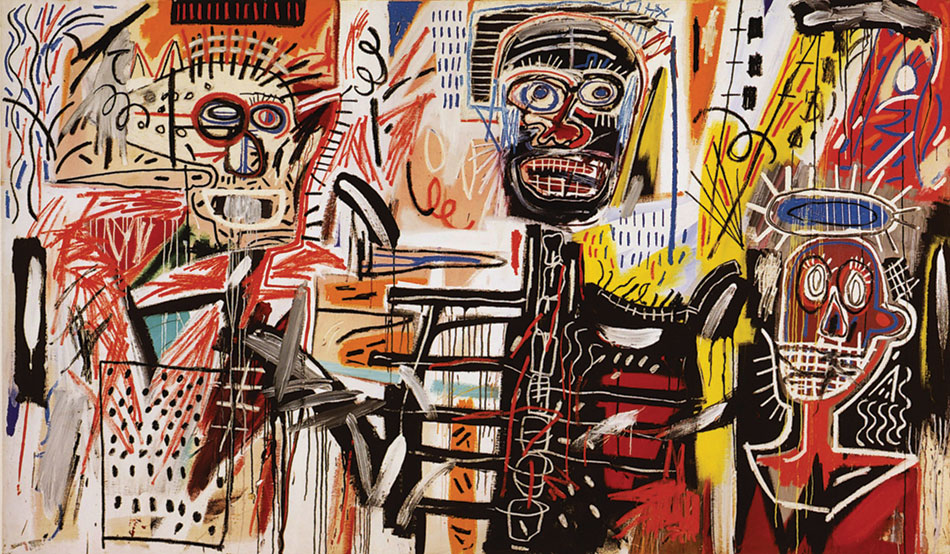
Basquiat’s love of doodling led to later pieces featuring coloured pencil on paper with a loose, spontaneous, and dirty style much like his paintings. His work across all mediums displays a youthful fascination with the creative process.
Lydia Lee: “Basquiat reworked Neo-expressionism’s language of gesture, freedom, and angst and redirected pop art’s strategy of appropriation to produce a body of work that at times celebrated black culture and history but also revealed its complexity and contradictions.”
“Basquiat reworked Neo-expressionism’s language of gesture, freedom, and angst and redirected pop art’s strategy of appropriation to produce a body of work that at times celebrated black culture and history but also revealed its complexity and contradictions.”
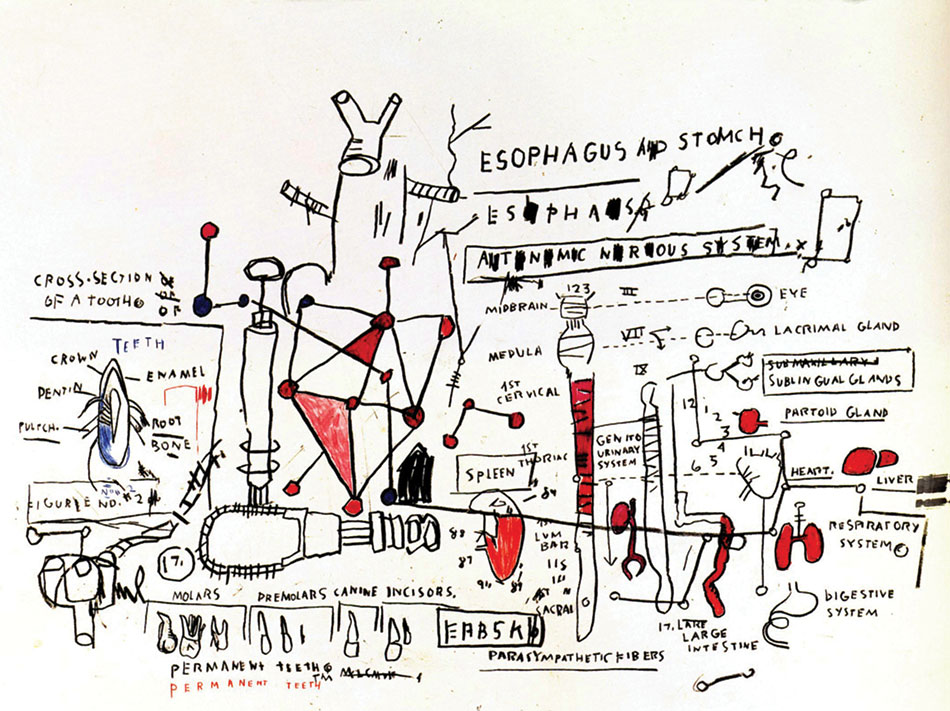
One of Basquiat’s pieces most notable pieces, Irony of Negro Policeman (1981), is intended to illustrate how African-Americans have been controlled by a predominantly white society. Basquiat pursued portraying how complicit African-Americans have become with the institutionalised forms of whiteness and corrupt white regimes of power. Basquiat found the concept of a “negro policeman” utterly ironic. It would seem to him that this policeman should sympathise with his black friends, family, and ancestors, yet instead he was there to enforce the rules designed by white society. In the painting, Basquiat depicted the policeman as large in order to suggest an “excessive and totalising power”, but made the policeman’s body fragmented and broken.
Also in her essay, Kellie Jones wrote that Basquiat’s “mischievous, complex, and neologistic side, with regard to the fashioning of modernity and the influence and effluence of black culture” are often elided by critics and viewers, and thus “lost in translation”.
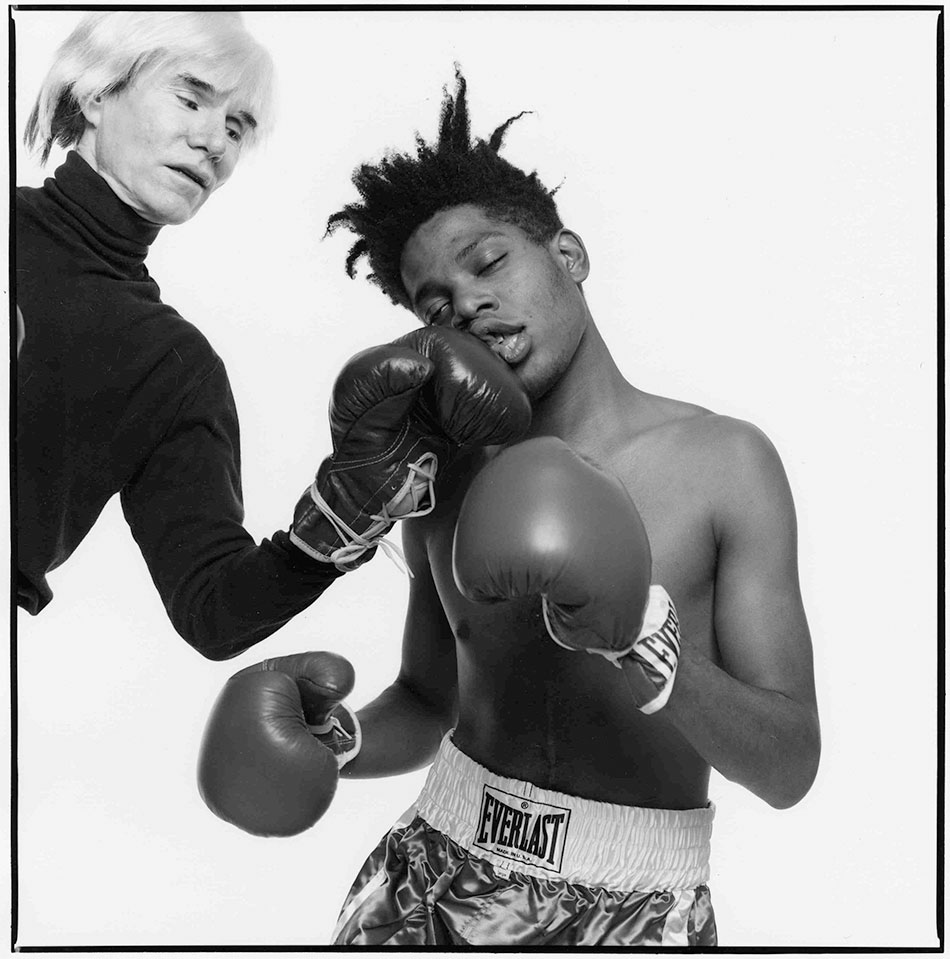
By 1986, Basquiat had become a successful artist, but his growing heroin addiction began to interfere with his personal relationships.
When Andy Warhol died in 1987, Basquiat became increasingly isolated, and his heroin addiction and depression grew more severe. Despite attempts at sobriety, he died of a heroin overdose at his art studio in 1988 at the age of 27.
Since his death, the Neo-Expressionist art market has developed steadily with a peak in 2007 when the global auction volume for Basquiat’s work was over $115m.
Notable private collectors of Basquiat’s work include John McEnroe, Madonna, Debbie Harry of Blondie, Leonardo DiCaprio, and Jay-Z.
